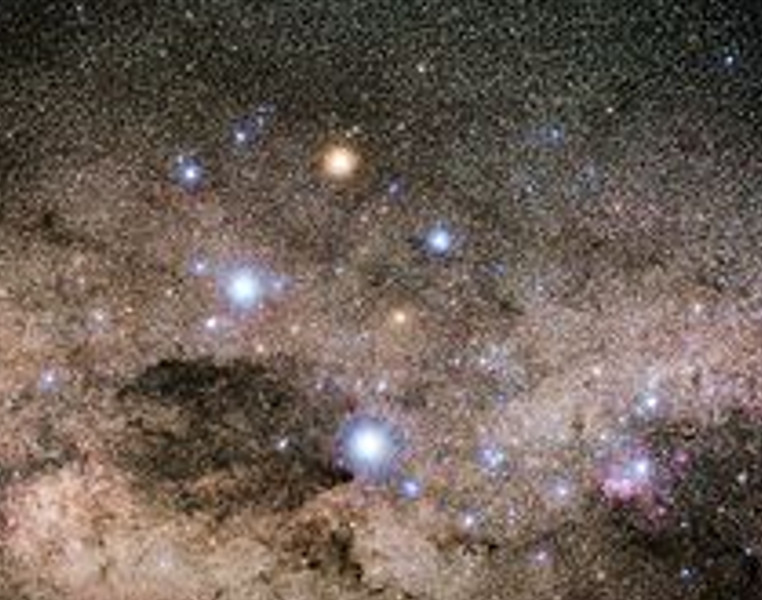
Crux (/krʌks/) is a constellation centred on four stars in the southern sky in a bright portion of the Milky Way. It is among the most easily distinguished constellations as its hallmark (asterism) stars each have an apparent visual magnitude brighter than +2.8, even though it is the smallest of all 88 modern constellations. Its name is Latin for cross, and it is dominated by a cross-shaped or kite-like asterism that is commonly known as the Southern Cross.
Predominating the constellation is the first-magnitude blue-white star of α Crucis (Acrux), its brightest and most southerly member. There follow four less dominant stars which appear clockwise and in order of lessening magnitude: β Crucis (Mimosa), γ Crucis (Gacrux), δ Crucis (Imai) and ε Crucis (Ginan). Many of these brighter stars are members of the Scorpius–Centaurus Association, a large but loose group of hot blue-white stars that appear to share common origins and motion across the southern Milky Way.
Crux contains four Cepheid variables, each visible to the naked eye under optimum conditions. Crux also contains the bright and colourful open cluster known as the Jewel Box (NGC 4755) on its western border. To the southeast figures a large, relatively near dark nebula spanning 7° by 5° known as the Coalsack Nebula, portions of which are mapped in the neighbouring constellations of Centaurus and Musca.
The bright stars in Crux were known to the Ancient Greeks, where Ptolemy regarded them as part of the constellation Centaurus.[1][2] They were entirely visible as far north as Britain in the fourth millennium BC. However, the precession of the equinoxes gradually lowered the stars below the European horizon, and they were eventually forgotten by the inhabitants of northern latitudes.[3] By 400 CE, the stars in the constellation we now call Crux never rose above the horizon throughout most of Europe. Dante may have known about the constellation in the 14th century, as he describes an asterism of four bright stars in the southern sky in his Divine Comedy.[4] Others argue that Dante’s description was allegorical, and that he almost certainly did not know about the constellation.[5]
